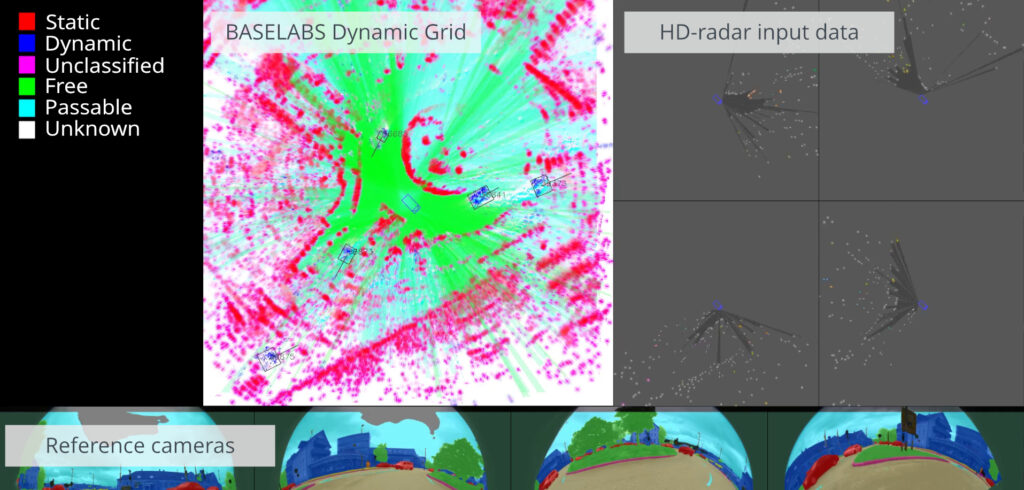Germany-based Baselabs, a specialist in sensor fusion, has released Dynamic Grid, an algorithm that generates a consistent environment model from high-resolution raw sensor data. The company claims this will help accelerate the development of data fusion systems for automated driving functions, especially in challenging urban environments. By skipping time-consuming algorithm training, automotive developers can develop driver assistance systems such as parking functions or traffic-jam pilots with better performance than traditional tracking and grid methods.
Automated driving functions for urban areas present exceptionally high requirements for the environment model used. On the sensor side, the industry is moving toward using high-resolution sensors to acquire the required data with a sufficient level of detail. Traditional algorithmic methods of sensor fusion reach their limits in such a context. Dynamic Grid, on the other hand, can process the high-resolution sensor data from devices such as radars or laser scanners at the raw data level. It is also possible to use cameras with semantic segmentation. As a result, the system provides a self-consistent environment model that detects dynamic and static objects in the vehicle environment with high accuracy and robustness. In addition, the algorithm estimates free space to identify driveable areas or parking spaces. The algorithm runs on automotive CPUs in real time and is implemented according to ISO 26262.
The company says that its latest offering is particularly suitable for driving functions for automation Level 2 and above, including highly automated driving. Typical application areas include automated parking functions such as trained or valet parking, emergency braking functions with automatic avoidance, and traffic-jam pilots. Furthermore, the algorithm is suitable for use in radar subsystems.
“With Dynamic Grid, we present a superior alternative to the combined use of traditional tracking methods and a static occupancy grid. By processing the data in an integrated manner in a self-contained algorithm, we avoid inconsistencies that the combination of two different methods in the traditional approach often entails. Dynamic Grid can show its strengths especially in scenarios with many objects and different directions of motion in the vehicle’s environment. In addition, the algorithm can detect and track objects of any shape without extensive training,” said Norman Mattern, head of product development at Baselabs.


